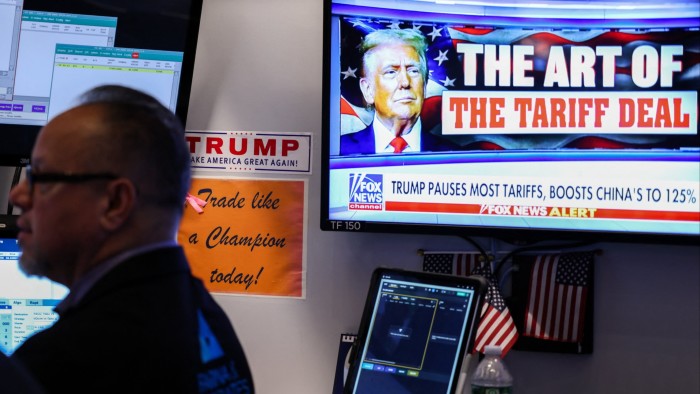Unlock the Editor’s Digest for free
Roula Khalaf, Editor of the FT, selects her favourite stories in this weekly newsletter.
The startling bounceback in US stocks since April’s tariff chaos has stalled. Now, Donald Trump’s “big, beautiful” budget bill is the event that could make or break it.
US retail investors are, it seems, all in. They were among the first to buy the dip in US stocks straight after the “liberation day” tariffs shock, and they never looked back. The rewards heading their way have been substantial, with a 22 per cent jump from April’s lowest point in the main US index, the S&P 500.
That index is still only just positive on the year, trailing far behind much of the rest of the world, and momentum has run out over the past couple of weeks. But still, mom-and-pop investors, and other early dip buyers, we salute you. This has been a very impressive trade.
If you squint, or wear rose-tinted glasses, or both, you can construct a decent argument why this recovery should rekindle. US President Donald Trump is treading a meandering and often unnerving path with his economic and geopolitical stances, especially on trade, but it feels like disaster has been averted.
He paused his most aggressive global trade tariffs, which have since run into a legal tangle. He outlined a deal with China. He has backed away from seeking to fire Federal Reserve chair Jay Powell and from the proposed 50 per cent tariff on the EU, and he has seemingly forgotten about other zany ideas like taxing foreign films.
So whether you bought the dip because you always buy the dip and you are not really sure why except that it has always worked in the past, or because you wisely picked the point in April where Trump stared into the abyss and backed down, is irrelevant. In markets, it is generally better to be good than lucky but a bit of either or both goes a long way.
Morgan Stanley, for one, thinks this can stretch out further, albeit with some bumps on the road. It is pencilling in a 6,500 level for the S&P 500 in the middle of next year — a 10 per cent ascent from where we are today — and advising clients to stick with the US over the rest of the world.
Much stranger things have happened. Who is to say this is wrong? But my extensive enquiries are yet to yield a deep bench of other market professionals who share this enthusiasm. Don’t shoot the messenger — plenty of other people have already done that in my inbox over the past few weeks — but many still do not see how this will all work out well.
The underlying reason for doubt is that disaster averted does not mean nirvana is in sight. As a result, for a lot of people the scale of the recovery seen so far in US markets — not just stocks but other risky asset classes too — simply does not make sense.
Viktor Hjort, a strategist at BNP Paribas, is among those warning that the bounceback has been an “extremely technical squeezy phase”, stemming from what was, in April, one of the more severe bouts of market stress of the past decade. “This was a market that was almost as [negative] as in the middle of 2022, early ’23, in the rate hike panic, when everyone thought the US would hike into a recession,” he said. That meant it took only a little good, or at least not bad news, to prompt a big jump.
Now, he says, the outlook for US corporate debt markets is unambiguously negative, with lots of companies facing the need to borrow more from investors just as borrowing costs seem likely to remain elevated and businesses struggle with chaotic import taxes that hamper their ability to plan.
The good news for US stock optimists is that big tech — the crown jewel of the market — is still pumping out stellar revenues, as Nvidia’s blowout earnings report this week showed.
But looming on the horizon is what Trump calls his “big, beautiful” budget bill, winding its way through the US legislative process now. This contains two major banana skins for investors.
One is “Section 899” — a provision that raises the possibility of extra taxes on foreign investment into the US. This has largely snuck under the radar, but investors are now, as we reported this week, spooked. Given the US underperformance relative to other world markets this year, and its pressing need to draw in foreign money, it is hard to imagine this will see the light of day. It is alarming nonetheless.
The other is the huge rise in borrowing, and in deficits, that the “beautiful” bill sketches out. Bond markets are already getting twitchy, which means all this extra borrowing, beautiful or otherwise, will come at a hefty cost.
Stock markets do not tend to perform well when benchmark bond yields stretch higher — especially sectors like tech, that investors often buy for their potential rather than their reality. “Every institutional investor gets that . . . ” says Mark Dowding at RBC BlueBay Asset Management. “But try explaining that to retail investors. They don’t care about all that. All they care about is ‘buy the dip, buy the dip, buy the dip’.”
Sour grapes? Maybe. But the recovery that has been trundling on for the past six weeks or so is about to face some stiff tests.
